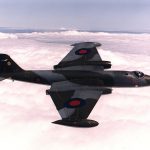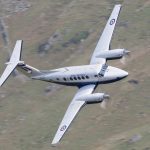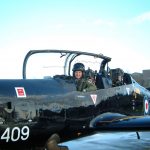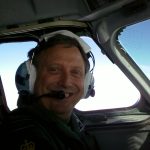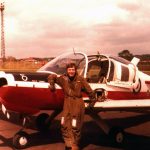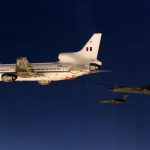During the IRT it is necessary to maintain a record of fuel requirements and usage on the Pilot’s Log (PLOG). Students initially make mistakes when planning their fuel requirements and usage, so these notes give guidance on how to do that correctly.
For planning purposes, our Operations Manual (Part C, Chap 2, Para 2.1) defines the fuel consumption of the PA34 to be 24 US Gals/Hr and it requires us to load at least the following fuel for each flight:
- Fuel for start-up and taxi.
- Fuel to destination.
- Fuel from destination to furthest planned alternate.
- Contingency fuel – 10% of items 2 and 3 above.
- Fuel for 45 holding.
- Fuel for the approach, go-around, circuit and landing.
Unfortunately there are misprints in the Seneca V SOPs and item 6 has been omitted. However, there are spaces for each of these items in the top left column of the template PLOG and they should be filled in. The total fuel required should then be calculated and entered underneath it. Finally, the fuel actually loaded on the aircraft should be entered at the bottom of the box.
The final approach (from 6 miles – approx 4 mins), go-around and visual circuit to land (approx 6 mins) should burn 4 US Gals.
So a completed Fuel Plan box should look something like this:
- Taxi (Defined in SOPs as 4 US Gals) – 4
- Destination – 24
- Alternate – 16
- Contingency (10%) – 3
- Hold (45 mins at 24 US Gals/Hr) – 18
- Final Cct (4 US Gals) – 4
- Total Required – 59
- Total Loaded – 90
To allow you to easily monitor your fuel usage during the flight, your PLOG should show the fuel required at the end of each leg to complete the flight and arrive at your destination with the minimums necessary (items 3, 5 and 6 above) – in this example, 38 US Gals. This is often know as the “red line” fuel below which you should not allow your fuel contents to drop below as the flight progresses.
Using the fuel plan above, at take-off your fuel contents should be 86 US Gals (having burnt 4 US Gals during the taxi) and the PLOG should look similar to this:
| Leg | ETA | ATA | Fuel Burn | Fuel Req | Actual Fuel | Difference |
|---|---|---|---|---|---|---|
| Oxford – xx1 | 10 | 65 | ||||
| xx1 – xx2 | 6 | 59 | ||||
| xx2 – xx3 | 7 | 52 | ||||
| xx3 – xx4 | 4 | 48 | ||||
| xx4 – Dest | 10 | 38 |
As the flight progresses actual fuel contents should be added at the end of each leg and the difference from the minimum required is calculated as shown here:
| Leg | ETA | ATA | Fuel Burn | Fuel Req | Actual Fuel | Difference |
|---|---|---|---|---|---|---|
| Oxford – xx1 | 10 | 65 | 76 | +11 | ||
| xx1 – xx2 | 6 | 59 | 70 | +11 | ||
| xx2 – xx3 | 7 | 52 | ||||
| xx3 – xx4 | 4 | 48 | ||||
| xx4 – Dest | 10 | 38 |
If you encounter a unexpected headwinds on your and third and fourth legs, your PLOG, might look something like this when you reach your destination:
| Leg | ETA | ATA | Fuel Burn | Fuel Req | Actual Fuel | Difference |
|---|---|---|---|---|---|---|
| Oxford – xx1 | 10 | 65 | 76 | +11 | ||
| xx1 – xx2 | 6 | 59 | 70 | +11 | ||
| xx2 – xx3 | 7 | 52 | 60 | +8 | ||
| xx3 – xx4 | 4 | 48 | 55 | +7 | ||
| xx4 – Dest | 10 | 38 | 45 | +7 |
This is the technique commonly used by the airlines. It allows you to easily monitor your performance against the computer flight plan. The only major difference is that their fuel margin would be a lot smaller (typically only the contingency fuel); ie, in this case “+3”!
For training flights from Oxford when it is intended to return directly to Oxford, it is prudent to plan the Alternate Fuel (item 3) to be burnt during the diversion from Oxford to a local airfield by adding additional legs at the bottom of the PLOG. For example, if Cranfield is chosen for use as a diversion from Oxford, the final PLOG should resemble the following:
| Leg | ETA | ATA | Fuel Burn | Fuel Req | Actual Fuel | Difference |
|---|---|---|---|---|---|---|
| Oxford – xx1 | 10 | 71 | 76 | +5 | ||
| xx1 – xx2 | 6 | 65 | 70 | +5 | ||
| xx2 – xx3 | 7 | 58 | 60 | +2 | ||
| xx3 – xx4 | 4 | 54 | 55 | +1 | ||
| xx4 – Dest | 10 | 44 | 45 | +1 | ||
| Dest – Oxford | 16 | 28 | ||||
| Oxford – Cranfield | 6 | 22 |
As you can see, this will require a recalculation of the Fuel Req (Red Line) column, from the bottom upwards, to ensure that you arrive at Cranfield with the minimum fuel required (items 5 and 6).

